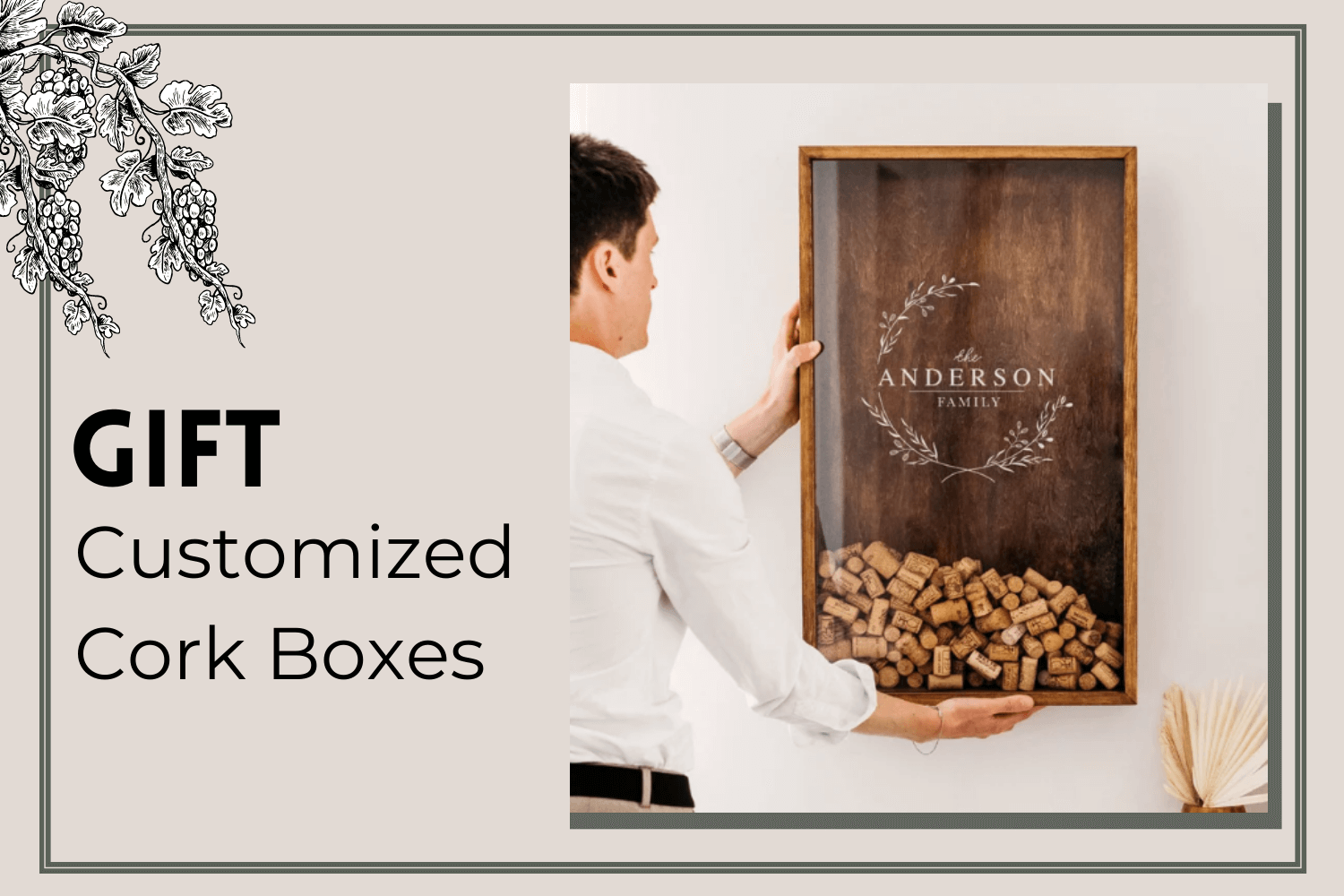Port wines have a prestigious heritage in the world of fortified wines and should definitely be in your wine-drinking repertoire.
Port is made by adding distilled grape spirit called aguardente during the fermentation process. This results in a sweet fortified wine. Only wines made in Portugal’s Douro Valley can be called Port. There are many styles of Port, including red, white, and rosé.
Here’s a quick overview of how Port is made.
- Port Winemaking Step 1: Harvesting Port Grapes
- Port Winemaking Step 2: Crush, Fermentation, and Extraction
- Port Winemaking Step 3: Fortification
- Port Winemaking Step 4: Aging
- Port Winemaking Step 5: Blending
- Port Winemaking Step 6: Bottling
- 6 Classic Port Wine Styles
- Common Questions About Port
- Final Thoughts – How Is Port Wine Made?
- Thirsty for More?
Port Winemaking Step 1: Harvesting Port Grapes

Grapes used for Port wine come from Portugal’s Douro Valley region, a steeply ravined river valley with vineyards hugging the mountainsides.
The Douro Valley extends West to East, with hotter vineyard locations further inland. Harvest happens from September through October.
Warmer sites are harvested earlier than cooler sites.
Red Port is a blend of grapes, the most common are:
- Touriga Franca
- Touriga Nacional
- Tinta Roriz
- Tinta Barroca
- Tinta Amarela
- Tinto Cao
- Sousao
Each grape adds a different character to the final blend, whether it’s body, tannin, color, or flavor. Port producers will decide which grapes and how much they want of each in their Port wines.
Port Winemaking Step 2: Crush, Fermentation, and Extraction
After the grapes are harvested, they are crushed and fermentation starts. The key to Port fermentation is maximizing extraction.
Why is extraction important for Port?
A significant portion of the aromas, flavors and color compounds in wine come from grape skins.
Extraction means that the winemaker needs to get all of those delicious qualities from the grape skins. They do this by submerging the grape skins into the grape juice over and over again.
In typical winemaking, extraction can last 2-4 weeks. Extraction for Port lasts a maximum of 2 days.
For Port, the winemaker will stop fermentation early, so they need to quickly get all of those goodies out of the skins as quickly as possible.
Extraction for Traditional Port Winemaking
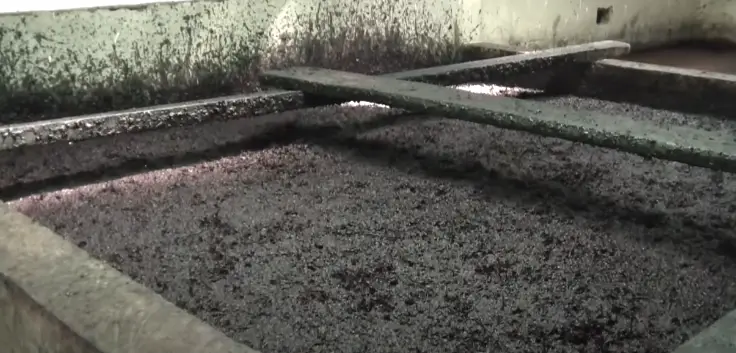
For centuries, traditional Port winemaking relied on laborers stomping the grapes in large, shallow square tanks, called lagares to speed up extraction.
Modern Extraction for Port Winemaking
Today, except for a small handful of boutique producers, extraction is automated using modern lagares that have silicon feet to punch down the grapes.
Producers can also use stainless steel pistons and pumps to punch down the grapes.
After the grapes are harvested, they are crushed to release their juice.
The juice, along with the skins and stems, begins fermentation in large tanks for several days to several weeks, depending on the type of port being made.
Helpful Tip: Here’s a geeky post on how wine fermentation works. If you’re really getting into wine, then it’s a must-read.
Port Winemaking Step 3: Fortification
Fortification happens no later than 2 days after fermentation starts. The wine has already fermented to 5%-7% alcohol by volume.
The winemaker adds spirit, called aguardente, to the fermenting wine.
Aguardente is 77% alcohol by volume.
This kills off the wine yeast and leaves behind sweet, unfermented grape juice that’s between 80-120 grams per liter of residual sugar. Port is fortified to between 19%-22% alcohol by volume.
Port Winemaking Step 4: Aging
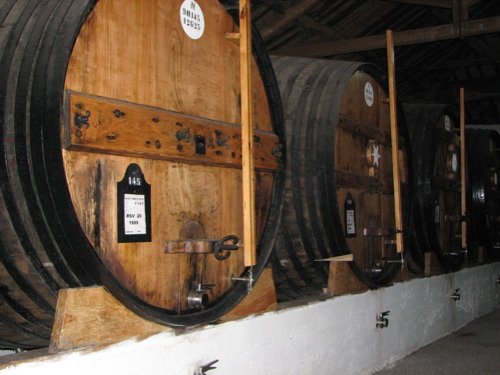
After fortification, the winemaker begins the aging and maturation process. This varies depending on the quality and style of Port. The aging process helps the wine and spirit integrate.
Two common Port aging vessels are balsieros and pipas.
- Balsieros: These are huge oak vessels that can hold 100,000 liters. These are used to keep wines fresh (there’s a small wood-to-wine surface area compared to the total volume of Port wine).
- Pipas: Pipas are much smaller, 600 liter oak barrels. Unlike regular wines, oak flavors aren’t desired in Port wines, so these oak barrels are pre-used to make regular wines before they become Port barrels. Smaller barrels allow for gentle oxidation that will give your Port wine nutty caramel notes.
The winemaker will rack the wines during the aging process. Racking means that they take the wine out of one barrel and move it to another, leaving the sediment behind.
Over time, racking will leave your Port wine clear and free of floaties, like dead yeast cells.
The frequency and number of rackings is another way that the winemaker can control oxidation and craft the final wine profile.
Minimum aging times are often mandated by Port’s regulatory body and vary depending on the style of Port being made.
Check out: Port and Douro Wines Institute (IVDP) (external link).
Port Winemaking Step 5: Blending
Most Port wines are a blend of lots (meaning different barrels or vats of wine) and of different years (non-vintage).
This allows the producer to craft and release a specific style that’s consistent every year so that customers know what to expect.
Port Winemaking Step 6: Bottling
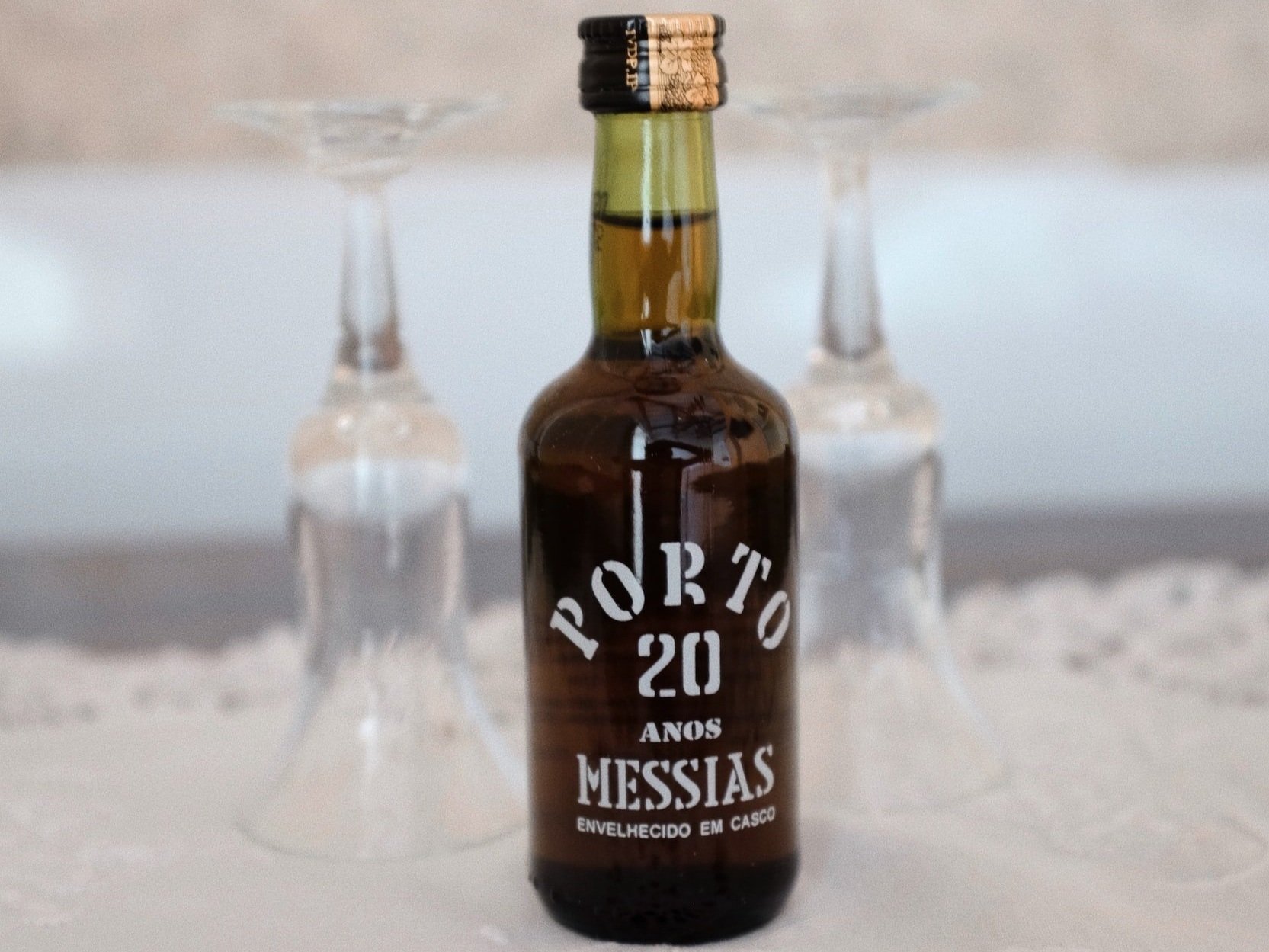
Port wines are bottled and shipped around the world. Some Port styles, like Ruby Reserve, go through a tasting panel to verify the wine’s quality. Some Ports are made for early drinking, like Tawny and Ruby Port, while other styles can be aged for decades, like Vintage Port.
6 Classic Port Wine Styles
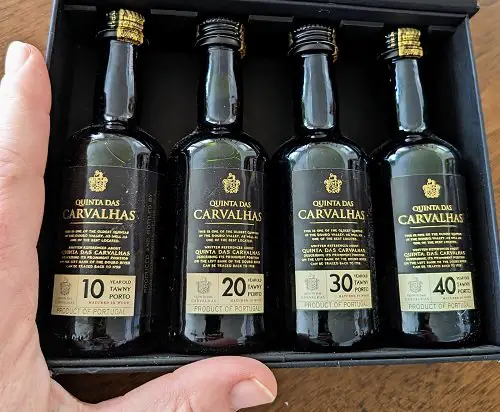
Port wines come in a dizzying array of styles, each with its own unique profile.
Here are 6 classic Port wine styles worth exploring:
- Ruby Port: Ruby Port is the most common type of port and is known for its rich, fruity flavor. Ruby Port is aged in large tanks or barrels, is a deep ruby color, and made for early drinking. Ruby Port is a blend of vintages. Still curious for more: Here’s a useful post that goes into the differences between Port and Ruby Port.
- Tawny Port: Tawny Port is aged in barrels which gives it a nutty and caramelized flavor. It’s lighter than Ruby Port, and can be light amber. The color doesn’t come from longer aging, but rather lighter extraction (see Port Winemaking Step #2 above). Tawny Port is a blend of vintages. Here’s a full rundown on the different styles of Tawny Port wines.
- Vintage Port: Vintage Port is made from the grapes of a single vintage. Producers only make Vintage Ports in exceptional years, which makes them special wines worth seeking out (they’re also expensive). Vintage Port is aged for a maximum of 3 years and goes through a tasting panel. Once bottled, Vintage Ports can age for decades. Check out this post that covers everything you need to know about Vintage Port wines.
- Late Bottled Vintage (LBV) Port: LBV Port is made from a single vintage, like Vintage Port, but is aged longer in oak barrels before bottling. LBV will be aged for 4-6 years before bottling and is bottled ready to drink. LBV is a step up in quality from Ruby and Tawny Ports. Still, drink them when you buy them. (Check out this post on Late Bottled Vintage Port for the full rundown of this delicious affordable Port style.)
- White Port: White Port is made from white grapes and can be made in an oxidative or fresh and fruity style. Drink them when you buy them; serve chilled or added to cocktails; and store leftovers in the fridge.
- Rosé Port: Rosé Port is a newer style of Port made by macerating red grapes for a short period of time and was invented by Croft in the late 2000s. Rose Port’s made the same way rose wines are made. Rose Ports tend to be fruitier with less intense flavors than regular red Ports. Rose Ports are pale salmon, pink, to almost Ruby. Drink them when you buy them.
Other subcategories within these types of Port include Reserve Ruby and Tawny Port, Crusted Port, Colheita Port, and Age Indicated Port.
Common Questions About Port
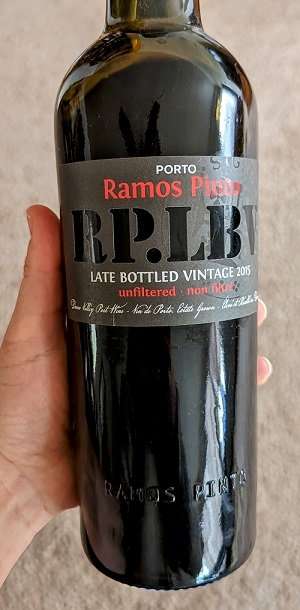
Is Port a Wine or Sherry?
Port and Sherry are both fortified wines but Port isn’t a Sherry. Port is a sweet fortified wine made in Portugal’s Douro region and Sherry comes from southwestern Spain.
Sherry is always white and comes in dry and sweet styles.
Generally speaking, Sherry tends to be lower in alcohol than Port (16% ABV compared to 19%-22% ABV).
Helpful Tip: Sherry goes through a complicated winemaking process, so I put together this post on how Sherry wine is made.
Helpful Tip: If you’re still curious, check out this post on the differences between Port and Sherry wine.
How Is Port Different than Wine?
Port is a fortified wine, which means that spirit is added during the winemaking process. This makes them higher in alcohol than wine. Port wines are 19%-22% alcohol by volume.
Regular wines are typically between 11%-15% alcohol by volume. Regular wines don’t have any additional spirit or brandy. The alcohol in regular wine comes from the grapes as they go through fermentation.
Helpful Tip: Here’s a post that covers how wine fermentation works. It’s a little nerdy, but can be a useful reference as you learn about wine.
What Kind of Alcohol Is Added to Port Wine?
Winemakers add aguardente spirit distilled to 77% alcohol by volume to Port wine. 77% ABV may seem like a lot, but it’s actually not as high as Sherry, which can be 95% alcohol by volume.
Fun Wine Fact: At 77% ABV, the spirit used in Port has character. This means that some spirits will be of higher quality than others. The quality of the spirit can have a subtle influence on the final character of the Port you’re drinking. Some producers may choose a more neutral spirit to showcase the grapes, others may choose fruitier spirits for aromatic Ports.
Final Thoughts – How Is Port Wine Made?
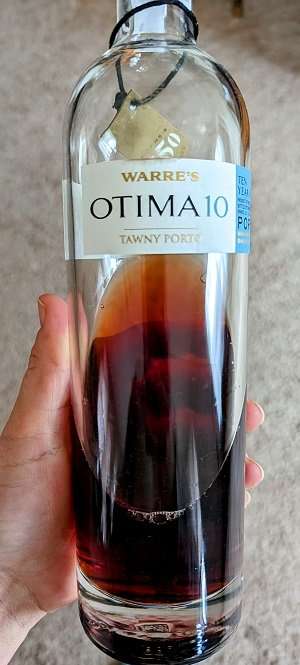
Port wines follow a long tradition of fortified winemaking born in the Douro Valley.
By blending grapes and perfecting extraction techniques, Port producers craft a range of Port wine styles that can fit any budget or taste preference.
How to Get Started with Port
The best way to learn more about Port wine is to do a side-by-side tasting of different Port wine styles.
Here’s a recommendation to get you started.
- 1 Bottle of Ruby Port
- 1 Bottle of Tawny Port with an Age Indication (like 10 or 20 years)
The Ruby Port will be relatively easy to find and inexpensive.
You want to find a bottle of Tawny Port with an age on it. You’ll see 10, 20, or even 30 years on the wine label.
This isn’t how old the wine actually is.
Instead, this tells you that the Port inside tastes like a 10- or 20-year-old wine.
- Pour yourself a small glass of each to do a side-by-side tasting.
- Taste the Ruby Port first and the Tawny Port second
Answer the following questions:
- Which wine is deeper in color?
- Which wine is more aromatic (smells more)?
- What do you smell in each wine?
- Which wine tastes fruitier?
- Which wine tastes more like candy and caramel?
- Which wine tastes more like spirit? (the alcohol burn in your mouth and throat)
Thirsty for More?
Here’s a rundown of what wine glasses you should be using when drinking Port wines (and also creative substitutes if you don’t have a full wine bar).
Here’s a quick rundown on Port Wine Frequently Asked Questions if you’re still just getting started with Port.
Who doesn’t love fortified wines? There are so many wines to try.
Fortified wines are relatively uncommon for most average wine drinkers, so I put together this post that goes into more detail on the differences between fortified and unfortified wines.
Here’s a post that explores 10 different types of fortified wines you may want to check out.
You may be interested in this post on how to pick out a good fortified wine.

